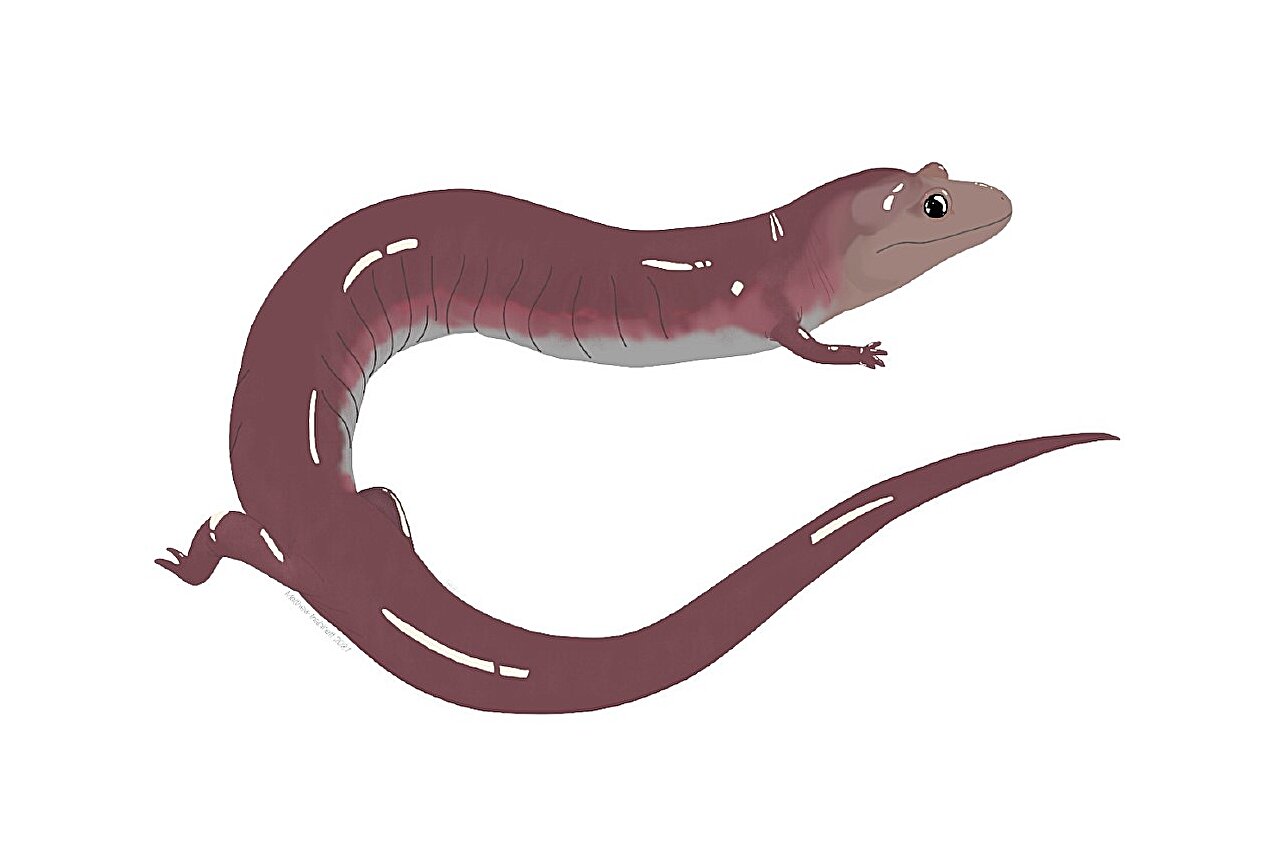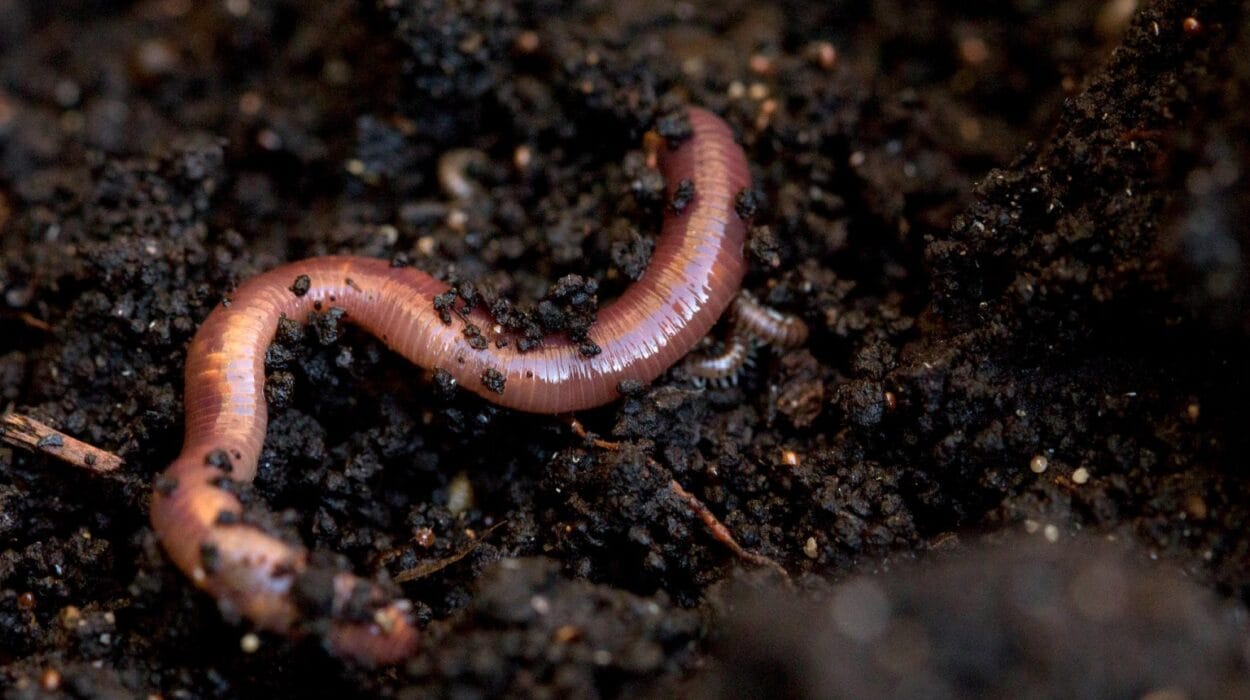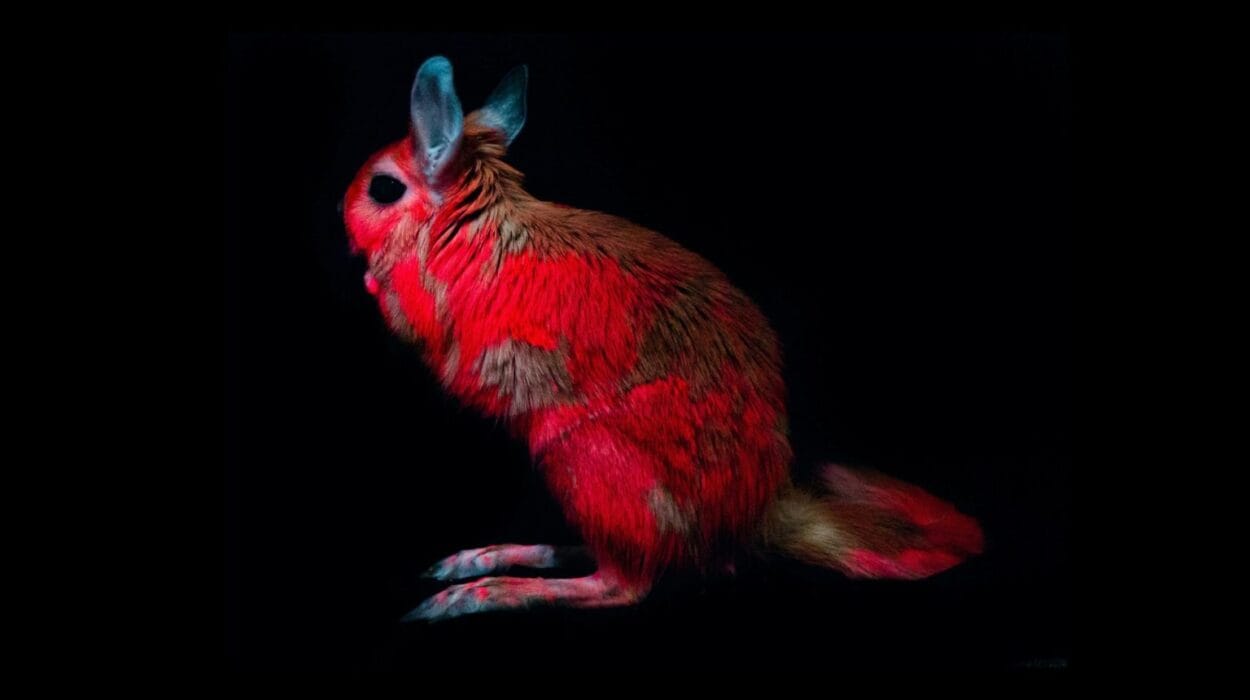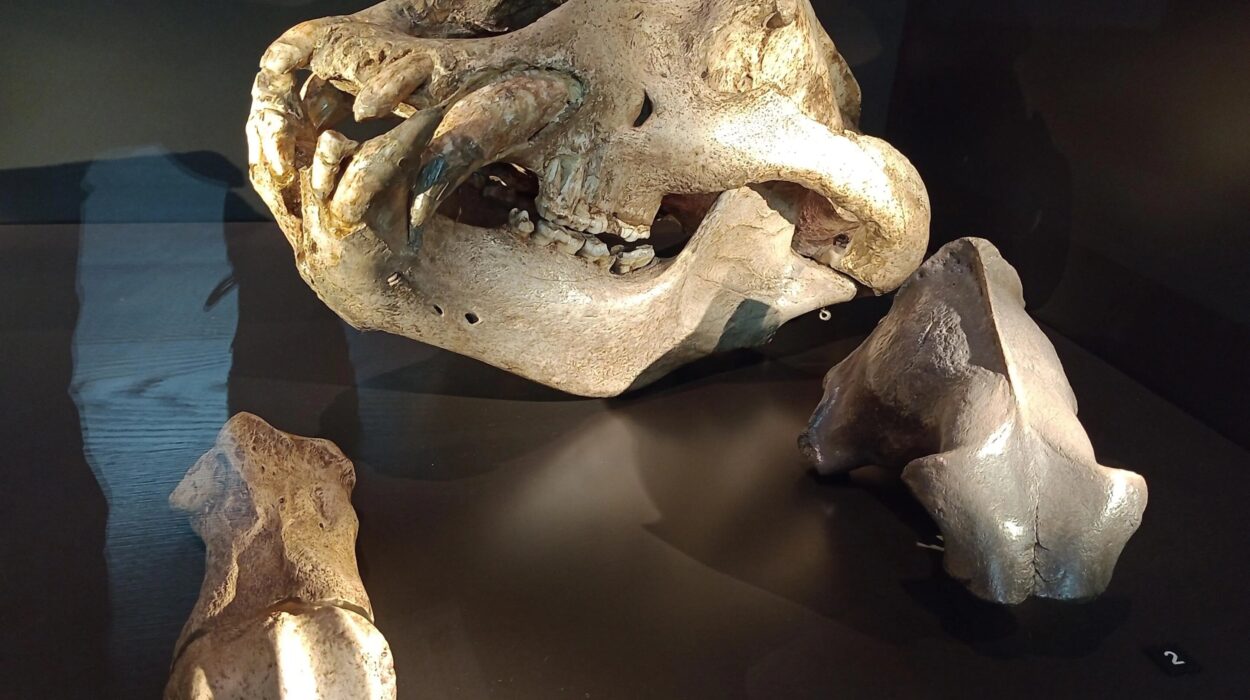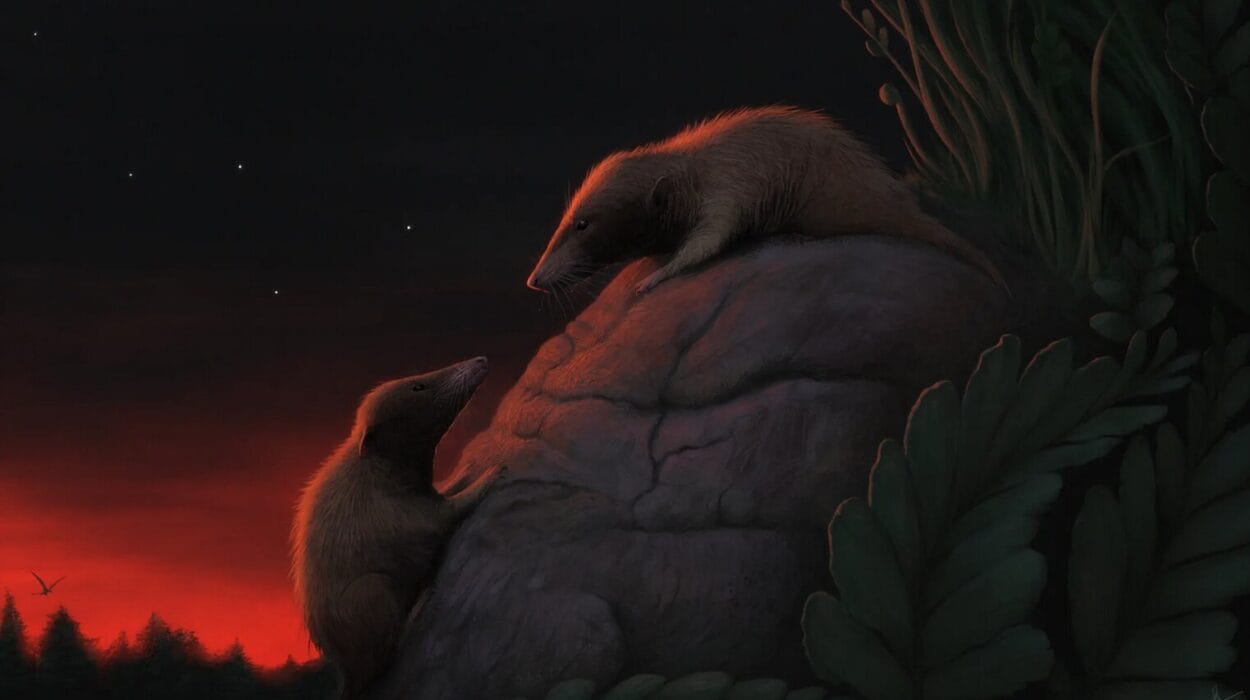In the ancient forests of what is now East Tennessee, five million years ago, a powerful, jaw-snapping predator slithered just beneath the forest floor. Measuring nearly 16 inches long with a muscular body built for tunneling, this giant, burrowing salamander ruled a primeval Appalachian world teeming with life.
Now, thanks to a remarkable fossil unearthed near East Tennessee State University’s Gray Fossil Site & Museum, that long-extinct creature—Dynamognathus robertsoni—has stepped from the shadows of prehistory to illuminate a critical chapter in the story of amphibian evolution.
The discovery, detailed in the journal Historical Biology, reveals not just a previously unknown species, but a whole new perspective on how today’s vibrant Appalachian salamander communities came to be.
“This isn’t just a big salamander,” said Davis Gunnin, assistant collections manager at the museum and lead author of the study. “This is a game-changer for understanding how Appalachia became the world’s salamander capital.”
A Bite from the Past
The name Dynamognathus comes from Greek, meaning “powerful jaw,” and for good reason. With thick bones and an unusually strong bite force, this salamander had the kind of head that could crush through soil and seize prey with ease. It was a tunnel-dwelling ambush predator, built like a muscular, subterranean torpedo.
“This group of salamanders has really unusual cranial anatomy,” said Shay Maden, assistant collections manager and co-author of the study. “The genus name was chosen to reflect that strength—and their surprising size.”
At an estimated 16 inches, Dynamognathus robertsoni wasn’t just a big amphibian. It may have been the largest terrestrial lungless salamander ever discovered, dwarfing the Appalachian dusky salamanders that top out at just seven inches today.
Its existence paints a far different picture of prehistoric Appalachia—one in which oversized, soil-burrowing giants likely shaped the course of evolution for countless smaller species trying to stay out of their way.
A Fossil, a Volunteer, a Legacy
The first specimen of Dynamognathus robertsoni was discovered not by a career paleontologist, but by a passionate volunteer.
Wayne Robertson has been sifting through the fossil-rich sediment at the Gray Fossil Site since 2000. Over the years, he’s carefully sorted more than 50 tons of dirt and debris by hand—helping scientists unearth ancient turtles, mastodons, and now, one of the most significant amphibian fossils ever found in the region.
In honor of his dedication, the species bears his name: robertsoni.
“Wayne’s work is the epitome of what science should be—collaborative, curious, and tireless,” said Dr. Blaine Schubert, director of the Gray Fossil Site & Museum and professor of geosciences at ETSU. “Without him, we might never have known this creature existed.”
The find is just the latest in a string of major discoveries at the Gray Fossil Site, a prehistoric treasure trove formed from a sinkhole that trapped ancient life over millennia. Located in the Appalachian foothills, the site has become a magnet for scientists seeking to understand the evolution of life in the American Southeast.
Ancient Appalachia: A Hotbed of Salamander Evolution
Today, the Appalachian region is the global epicenter of salamander diversity. With over 50 species found in Tennessee alone—including an astonishing variety of lungless salamanders—it’s no wonder biologists have long wondered where all this diversity began.
This new fossil suggests that the roots of this richness go deeper than previously thought—both in time and in the soil.
Until now, evolutionary biologists believed that Alabama’s Red Hills salamander, a large, worm-like creature, was a rare outlier—an evolutionary relic with little influence on modern salamander lineages.
“But Dynamognathus shows that these large burrowers weren’t isolated oddities,” Gunnin explained. “They were widespread, and they were probably important players in shaping the ecosystems that gave rise to the dusky salamanders we see today.”
In other words, predators like Dynamognathus robertsoni may have set the evolutionary tempo, pushing smaller salamanders to adapt rapidly—diversifying to avoid becoming lunch.
From Warm Swamps to Ice Age Refuges
The climate of prehistoric East Tennessee was much warmer than it is today—a subtropical land of swamps, lush forests, and abundant life. But as Earth shifted into the icy rhythms of the Pleistocene epoch, the land cooled. Large salamanders like Dynamognathus were gradually pushed southward, seeking refuge in warmer latitudes.
Today, their living descendants, like the Red Hills salamander, cling to survival in small pockets of southern Alabama. But the fossil record shows that their story once stretched far across the Appalachian range.
“The warmer climate 5 million years ago, followed by glacial cooling, likely pushed these big burrowers into smaller ranges,” said Dr. Joshua Samuels, head curator at the museum. “That’s why we only find them in Alabama now—but this fossil proves they were here, too.”
A Museum as Living Laboratory
The team behind this discovery—made up of volunteers, students, specialists, and professors—represents more than just a moment in science. It’s a model for how discovery can thrive through community.
“When Davis Gunnin first volunteered as a teenager, he was fascinated by salamanders,” Schubert recalled. “I told him, ‘This region is rich with potential. We just haven’t found the fossils yet.’ Now, he’s helped us find one of the most important salamander fossils ever uncovered.”
That full-circle story—from teenage curiosity to scientific breakthrough—is what makes the Gray Fossil Site & Museum so special. It’s not just a place where fossils are kept—it’s a place where lives are changed, and Earth’s secrets slowly revealed.
More Than Just a Salamander
Dynamognathus robertsoni is more than a name in a journal article. It’s a window into a forgotten world, a clue in the evolutionary puzzle, and a testament to what science can achieve when passion, patience, and persistence come together.
From the deep past to the dirt under our feet, the legacy of Appalachia’s ancient giants continues to shape the region’s ecology and inspire the people who study it.
“This fossil is a reminder,” said Gunnin, “that there’s still so much we don’t know about our own backyard. But every new discovery brings us one step closer to understanding the incredible story of life on this planet.”
Reference: Davis Gunnin et al, A new plethodontid salamander from the Early Pliocene of northeastern Tennessee, U.S.A., and its bearing on desmognathan evolution, Historical Biology (2025). DOI: 10.1080/08912963.2025.2501332
